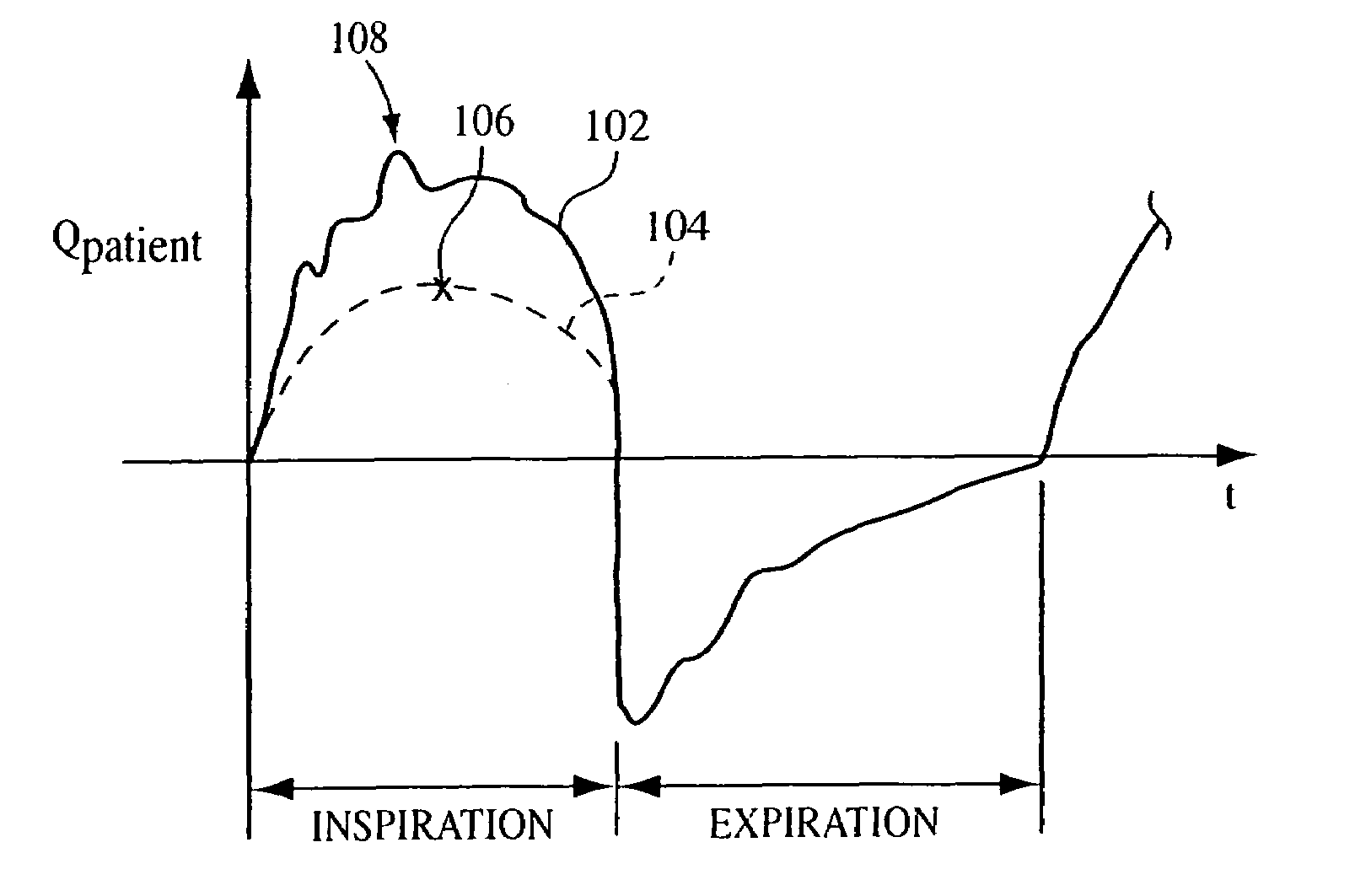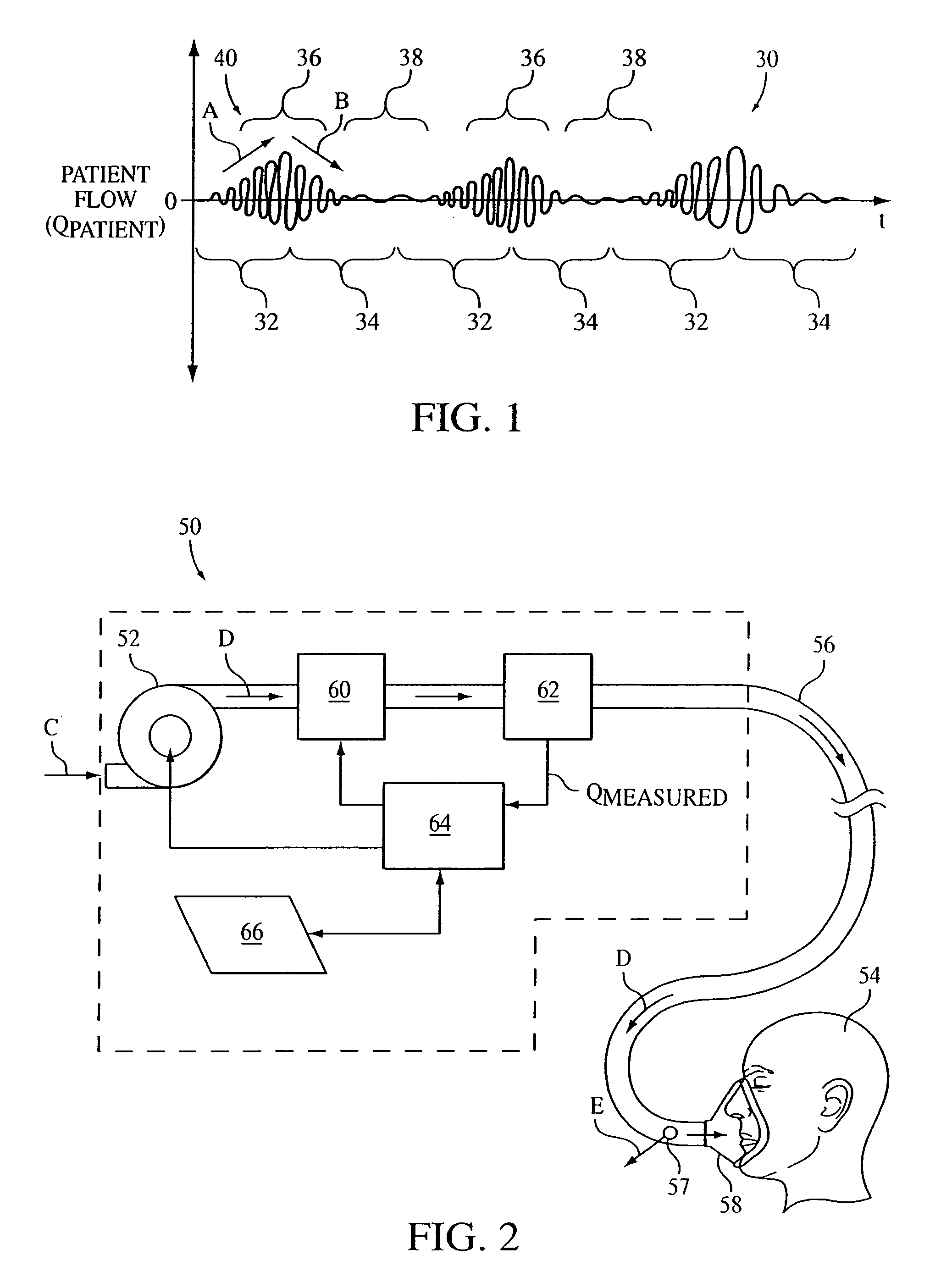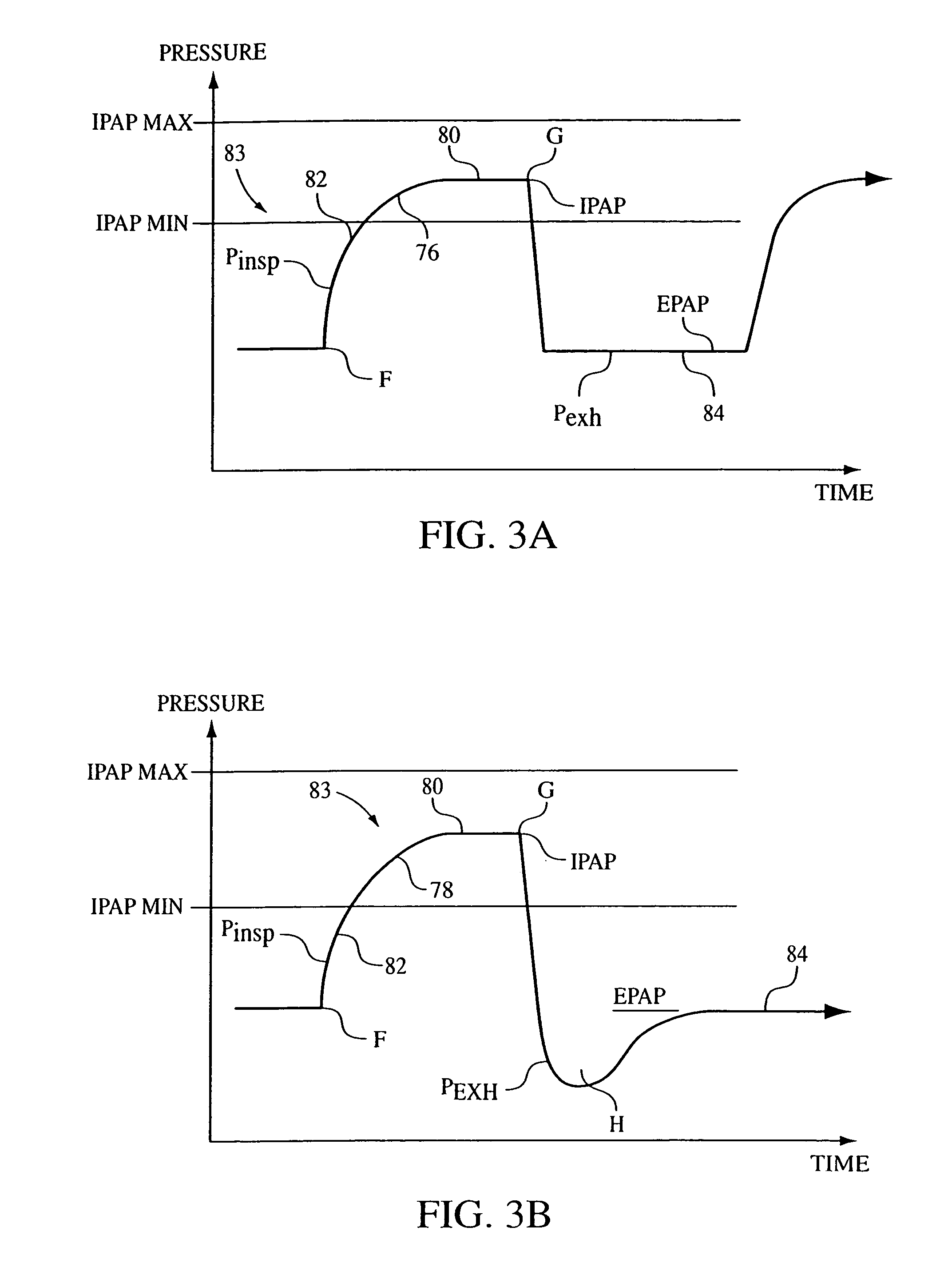Method and apparatus for treating Cheyne-Stokes respiration
a technology of respiration and cheyne-stokes, which is applied in the direction of respirator, mechanical apparatus, operating means/releasing devices, etc., can solve the problems of increasing respiratory rate, increasing cardiac and respiratory workload, and degrading sleep quality, so as to increase the flow pressure and reduce the pressure
- Summary
- Abstract
- Description
- Claims
- Application Information
AI Technical Summary
Benefits of technology
Problems solved by technology
Method used
Image
Examples
Embodiment Construction
I. System Hardware
[0040]FIG. 2 schematically illustrates a positive airway pressure support system 50 suitable for providing an improved variable positive airway pressure mode of pressure support to a patient according to the principles of the present invention. This mode of pressure support is particularly suited to treat Cheyne-Stokes respiration. Pressure support system 50 includes a gas flow / pressure generator 52, such as a blower used in a conventional CPAP or bi-level pressure support device, piston, bellows, compressor, or any other device that receives breathing gas, generally indicated by arrow C, from any suitable source, e.g., a pressurized tank of oxygen or air, the ambient atmosphere, or a combination thereof. Gas flow / pressure generator 52 generates a flow of breathing gas, such as air, oxygen, or a mixture thereof, for delivery to an airway of a patient 54 at relatively higher and lower pressures, i.e., generally equal to or above ambient atmospheric pressure.
[0041]Th...
PUM
 Login to View More
Login to View More Abstract
Description
Claims
Application Information
 Login to View More
Login to View More - R&D
- Intellectual Property
- Life Sciences
- Materials
- Tech Scout
- Unparalleled Data Quality
- Higher Quality Content
- 60% Fewer Hallucinations
Browse by: Latest US Patents, China's latest patents, Technical Efficacy Thesaurus, Application Domain, Technology Topic, Popular Technical Reports.
© 2025 PatSnap. All rights reserved.Legal|Privacy policy|Modern Slavery Act Transparency Statement|Sitemap|About US| Contact US: help@patsnap.com



